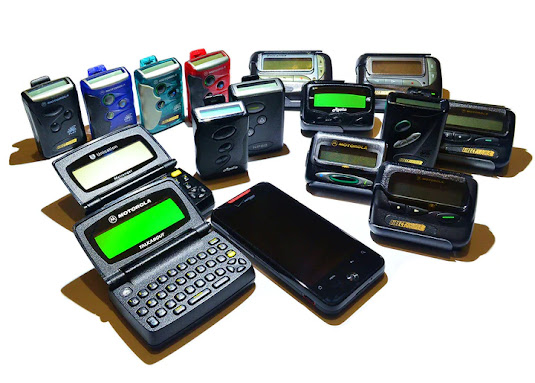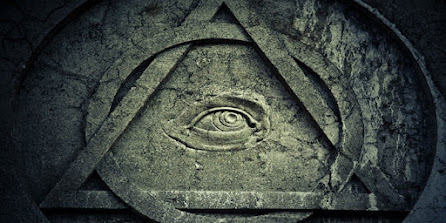Great Inventions All Canadian part 1 of 2.
You Won't Believe What Was Invented
So, you are wondering what possibly could've been invented by anyone in Canada. I know I was asking myself that question. Let me just say that I was completely shocked to have found out that the inventions are actually really damn good ones.
Besides being known for stupid slang words, like, "eh" or "howdy" and maybe even, "Whatcha doin'?" We Canadians should be proud of the inventions that are from here. Don't worry America, I will get to you guys too. You Americans have some gooders too. Way to go guys! 😎😁👍
Heck, when I was going through all the information and realizing some of the truly amazing finds, that there is more to our country's being and they hold a lot of untold stories. Either side.
The secrets that have not been told should be told and I am here to do just that. Can't let these really cool inventions squeak by without my commenting or my opinion on things. That's just not going to happen. I need to say a few things. My opinions matter. My life matters. Like those signs around the city say about the colored people that live here.
Well, enough about that. Some of these inventions are things that we still use on a daily basis. Things that you would use and not even think twice about why it was even invented, but the fact that it was and you are truly thankful.
I know right, this stuff blew my mind too.
Let's get into this list, shall we?
Canadian Inventions:
- THE PAINT ROLLER. Was invented around 1940 in Toronto by Norman Breakey, but he died before being able to patent his invention and profit from it. The first paint roller patent was held by American Richard Croxton Adams.
- THE GARBAGE BAG. The garbage bag was invented by Harry Wasylyk and Larry Hansen in Winnipeg in 1950. The green polyethylene garbage bag they invented was bought by Union Carbide, who sold the bags under the name Glad.
- THE PAGER. The pager was invented by Alfred J. Gross, a Toronto- based wireless communications pioneer, in 1949. Gross is often credited as the inventor of the walkie-talkie, a distinction he sometimes shares the fellow Canadian Donald Hings, who is also credited for having created the two-way radio in 1939. Gross also invented the CB radio and the cordless phone. Before he died, he was quoted as saying: "I was born thirty-five years too soon. If I still had the patents on my inventions, Bill Gates would have to stand aside for me."
- PEANUT BUTTER. Although popular culture would have some believe otherwise, peanut butter wasn't invented by American botanist George Washington Carver, Rather, it was created in 1884 by Canadian pharmacist Marcellus Gilmore Edson, who likened the consistency of this product to that of butter, lard, or ointment.
- ROAD LINES. The first road lines in the world were painted on a stretch of highway between Ontario and Quebec in 1930, having been invented by Ontario Department of Transport engineer John D. Millar.
- WONDERBRA. Although the term "Wonder- Bra" was coined by American Israel Pilot in 1935, Canadian Moses Nadler is the one who popularized the brand. Nadler licensed the patent from Pilot and made his first Wonderbra in 1939 at his Montreal- based Canadian Lady Corset Company. When Piolt's patent expired in 1935, Nadler fought for, and won, the rights to the Wonderbra name in several major markets. The push-up bra with the deep plunge better known as the Dream Lift- was designed by Canadian Lady employee Louise Poirier in 1961.
- ARCHIE. The first internet search engine, Archie, was created by Alan Entage at McGill University around 1988. Tired of performing the same task manually each day, Emtage wrote a set of scripts to search through the FTP archives on a nightly basis. Eventually, it caught on to other early university internet users and was made available for public use in 1980. The Archie search engine can still be seen in all of its 1990s glory here.
- IMAX. IMAX was invented by a trio of Canadian filmmakers- Graeme Ferguson, Roman Kroitor, and Robert Kerr- in 1967. After being independently asked to produce large-screen films for Expo 67, the filmmakers realized they needed different equipment.
- THE PACEMAKER. The first subcutaneous pacemaker was built in 1949 by Canadian engineer John Hopps, based on observations made by two Toronto-based cardiac surgeons, Wilfred Bigelow, and John Callaghan. According to the National Research Council of Canada, Dr. Bigelow believed that the only way cardiovascular medicine could advance was by enabling open-heart surgery." To do that, he believed the body needed to be cold, which in turn slowed the heart. Through their research and experiments, they noticed an electrical pulse could restart the heart. They tapped electrical engineer Hopps to build a clinical device for them. The first implantable pacemaker was in 1958. It was used on a Swedish man, who lived to age 86.
- BASKETBALL. Anyone who's seen a Canadian Heritage Minute knows basketball was invented by a Canadian James Naismith. He invented the sport while working as a physical education instructor at a YMCA in Massachusetts in 1891.
- THE FIBREGLASS GOALIE MASK. The fiberglass goalie mask was invented by former Montreal Canadians goaltender Jacques Plante, who was tired of getting hit in the face by pucks. He wore it during a game for the first time in 1959, after being hit in the face by a puck during a Canadians-New York Rangers game.
- PABLUM. Pablum was invented in 1930 by three pediatricians at Toronto's Hospital for sick children. Doctors Fredrick Tisdall, Theodore Drake, and Alan Brown, along with nutrition lab technician Ruth Herbert and chemist Harry Engel, made the cereal to help curb infant malnutrition and rickets.
- INSULIN. Was discovered in 1921 by Toronto doctor Fredrick Banting and further developed at the University of Toronto by Banting, Charles Best, John Macleod, and Bertram Collip.
- JAVA PROGRAMMING LANGUAGE. Was first developed in California in the early 1990s by James Gosling, an Albertan- born computer scientist. Java 1.0 was released by the company in 1995. Java was meant to be used with an interactive, handheld home entertainment controller that was originally targeted at the digital cable television industry.
- THE ELECTRIC WHEELCHAIR. Invented by Canada's most accomplished inventor, George Klein, in 1953. He developed the aircraft skis, the M29 Weasel army snowmobile/ATV, the microsurgical staple gun, the ZEEP nuclear reactor, a scientific language for snow, and other feats of mechanical engineering.
- WIRELESS RADIO TRANSMISSION. Canadian Reginald Aubrey Fessenden was a prolific inventor in the area of wireless technology. He was the first to broadcast on the AM radio band in 1990. He also invented sonar.






Comments
Post a Comment